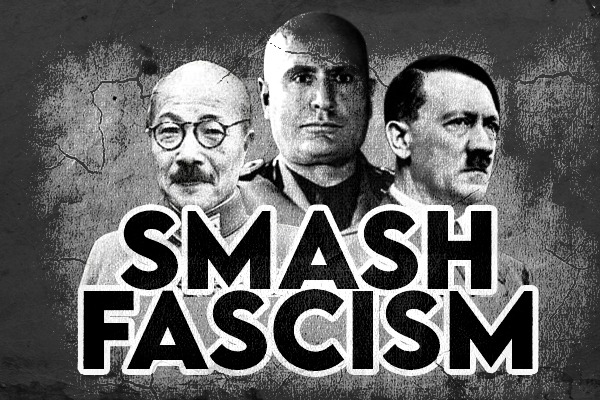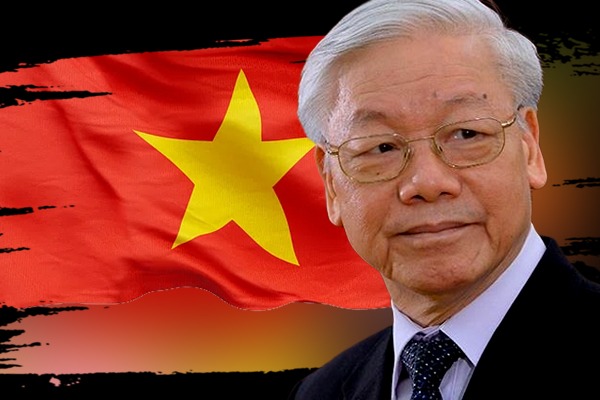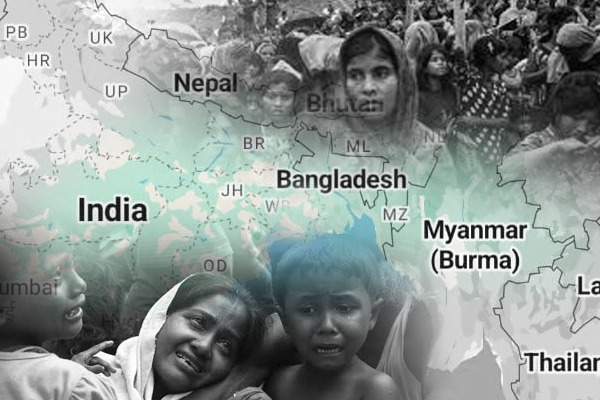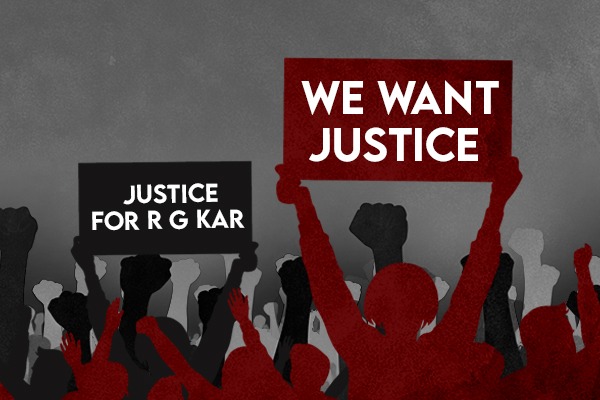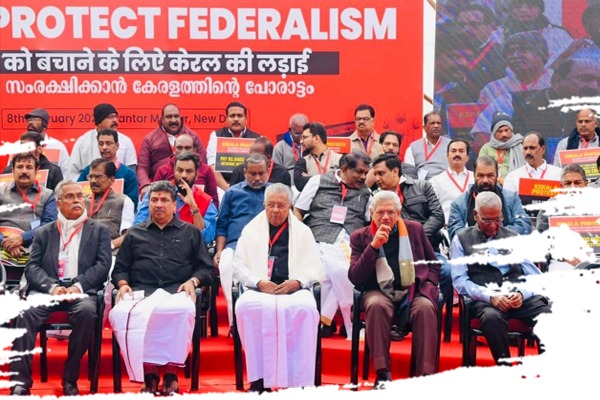The concept of fascism is understood by many as the fascism of Hitler or Mussolini. It must be remembered that when capitalism entered a period of utter crisis internationally and gave birth to imperialism, that was the time of the rise of fascism. It was brought about by the bourgeoisie to serve their own needs. The socialist revolution in Russia and the consequent wave of strong labor movements in country after country terrified the bourgeoisie at that time. The situation in Italy and Germany was ripe for revolution. The capitalists had no way to survive other than by establishing fascism as a counter-revolutionary coup.
Fascism is not just brutal repression but more. In 1923, the report of the Third Plenum of the Executive Committee of the Communist International correctly stated in this regard – “If fascism is a tool for repression by the bourgeoisie, then the state was in the hands of the bourgeoisie, why was it necessary to introduce fascism separately? The bourgeois state failed to suppress the protests of the exploited people using its traditional tools. That is why he needed to create a power from within the society, outside the administrative power of the state, which could protect the bourgeoisie. And that is fascism.”
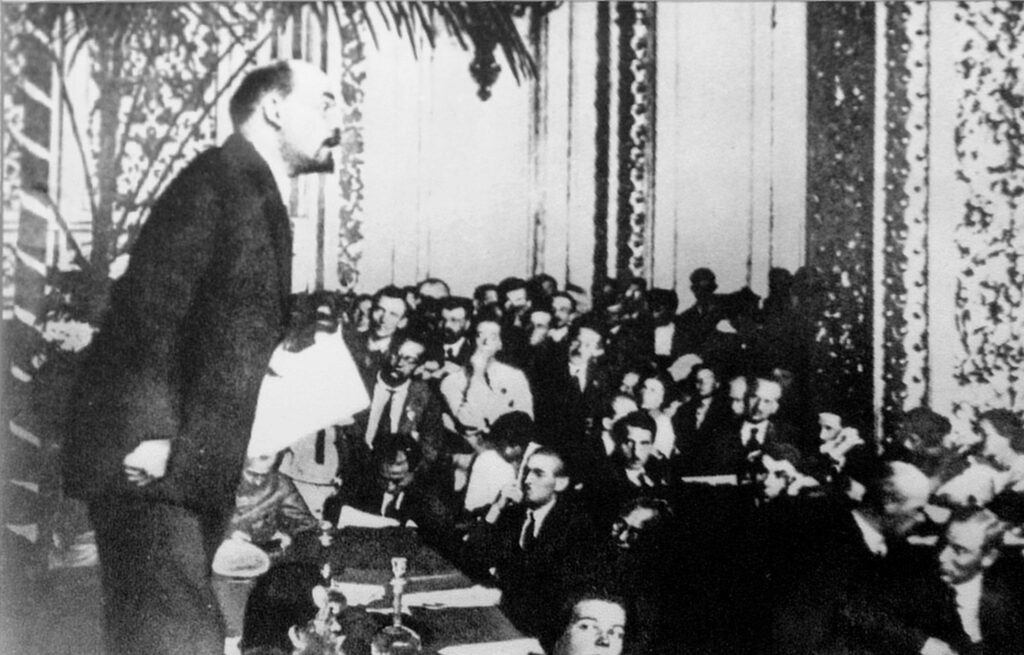
After the Nazi Party seized power in Germany, Comrade Stalin said at the Seventeenth Congress of the Soviet Communist Party that the victory of fascism in Germany, “. . .must not be regarded merely as a sign of the weakness of the working class or as the result of the betrayal of Social Democracy towards the working class, which paves the way for fascism. This must be regarded as a sign of weakness of the bourgeoisie. This must be regarded as a symptom of the fact that the bourgeoisie is already unable to maintain its rule in the traditional parliamentary and bourgeois democratic system and is therefore forced to adopt a terrorist approach to domestic policy. This must be regarded as a symptom of the fact that the bourgeoisie is unable to find a way out of the present situation on the basis of a peaceful foreign policy and is consequently forced to resort to a policy of war.”
Comrade Dimitrov, General Secretary of the Communist Party of Bulgaria, presented a report to the 7th Congress of the Communist International in 1935. In it, he said, “The aim of fascism is to establish unbridled exploitation of the people, but with the intense hatred of the working people against the plundering bourgeoisie, banks, trusts and tycoons, fascism is able to win over the minds of the politically immature masses with a very clever and catchy anti-capitalist slogan. . . Fascism seizes the very people who have abandoned the old bourgeois parties out of lost faith for the most reactionary cliques of the bourgeoisie. But fascism impresses these people by the severity of its attacks against bourgeois governments and by its uncompromising attitude towards the old bourgeois parties. . . Fascism is able to appeal to the masses because it appeals rhetorically to the most pressing needs and demands of the masses. Fascism not only provokes deep-rooted prejudices among the people, but also exploits their more refined sentiments, namely their sense of justice, and sometimes even their revolutionary heritage.”
Several important issues came up in the discussions of the Communist International in the course of theorizing fascism. Allegations against the bourgeoisie of being unable to run the state in a conventional parliamentary manner, thus turning to terrorism in domestic policy and war in foreign policy, of being the aggressive form of investment capital, of misleading the people to gain its support, of chanting bourgeois aspirations and declaring jihad against conventional bourgeois parties (not in all cases, but in different forms in each country – that has also been said) are important and correct.
Nevertheless, some serious deficiencies remained in characterizing fascism.
For example, why did people get confused? Why did they not recognize fascism? How did Hitler get the support of most of the people in the whole country to create extreme nationalism and hatred in Germany? How was it possible to do this with a nation so advanced in science, education, and philosophy? In continuation of which societal thought did Fascism emerge? – These questions were not answered. That is, the philosophical side of fascism could not be exposed, so the thought of organizationally defeating the fascist power became the predominant thought behind the battle. As a result, despite the organizational defeat of fascism in Germany and Italy, members of the anti-fascist front kept emerging with similar rhetoric and appearances.
Although it may sound surprising, the source of fascism is bourgeois humanism. Humanist ideologies and values have been distorted as global capitalism faced an all-out crisis. The humanism that once stood for equality, friendship, freedom – in the era of decadent capitalism, two completely opposite reactions have occurred to that humanist ideology. On one hand, there is a line of humanism that compromises with religion and combines the technical side of science with spiritualism. This is the basis of the fascist mentality. On the other hand, the part that did not compromise with religion and traditionalism, because of the old mentality which is still opposed to the concept of any kind of ‘prior value’, but remained unable to understand the scientific laws of social development through class struggle and class exploitation – promoted radical individualism and gave rise to the existentialist philosophy of Sartre. These two are the extreme consequences of humanism, the ideological concept of capitalism, in the era of imperialism and reactionary global capitalism.
Marxist philosopher Shibdas Ghosh said, “The history behind the fascist revolution, i.e., the economic, political and cultural aspects of it, if we judge it historically and scientifically, the fact will be easily revealed that the humanist mentality today unifies scientific technology and spirituality for the purpose of organizing a counter-revolutionary national revolution against the proletarian revolution due to the fear of revolution. A strange combination formed the ideological and cultural basis of fascism. Philosophically and culturally, fascism is a strange fusion of spirituality and science. . . .In the days of this all-out crisis of capitalism, a section of humanists combined science (technology) and spiritualism on the one hand, and on the other hand preserved a compromise of religious values and national traditionalism with humanist ideologies and values in terms of ethics and morality, giving birth to fascism.”
He also made two important contributions to Marxist scholarship on fascism. First, he showed that the characteristics of fascism were not destroyed even after the defeat of fascist military power, but that fascism existed in various forms and degrees not only in developed capitalist countries but also in developing capitalist countries in the final reactionary present stage of capitalism. In other words, the state that operates in the capitalist economic system today is bound to walk on the path of fascism.
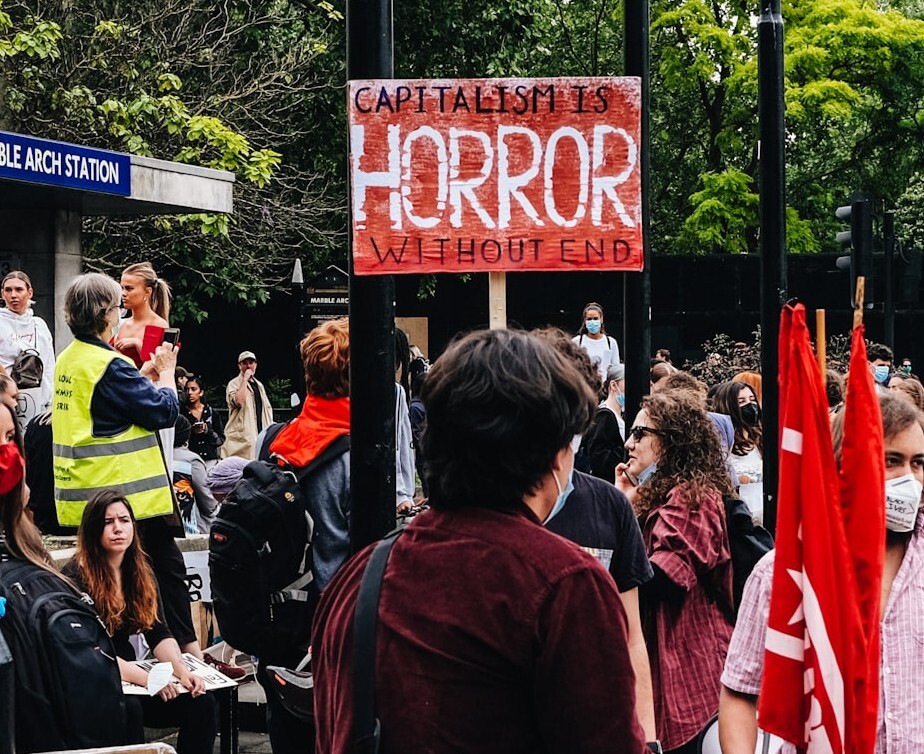
Second, he specified three characteristics of fascism. In this context, he said, “Fascism is a historically determined form of counter-revolution, through which capitalism seeks to resist revolution by preemptive action. Its purpose is to save the capitalist system from collapse, which is plagued by crisis and tainted by chaos in the face of growing public discontent against the existing system. At a particular juncture of history – when the existing normal economic organization, political institutions and administrative machinery fail to cope with the growing crisis of capitalism, when it becomes almost impossible to maintain any stability of the market and achieve the maximum profit, when the public is hit hard by the uncertainty of life due to the crisis – the bourgeoisie, realizing the need for change, threw away all variations of cloaking the dictatorship of the bourgeoisie under the cloak of parliamentary democracy, in order to effectively maintain the fundamental principle of maximum profit in a capitalist economy. These historical circumstances give rise to certain common characteristics in fascism, which help to identify it.”
The distinguishing features of fascism that we find from this analysis are – (1) monopolistic concentration of capital (2) ultimate concentration of political power in the hands of the state (3) combination of spiritualism and technical science.
In the post WW-II world, fascist tendencies exist in all bourgeois countries, whether advanced or underdeveloped. Fascism can come through a military dictatorship, a one-party parliament or a two-party parliament – anything. The real truth is that when capitalism in the present imperialist world system has entered the stage of international crisis, no country, whether industrially advanced or underdeveloped, and even if investment capital is not developed within an underdeveloped country, cannot solve any of the fundamental problems of public life. All capitalist countries today are forced to follow the path of fascism in order to suppress popular protests and build monopoly investment capital in the public and private sectors.
If we look at Bangladesh after the liberation war, we will be able to understand the reality of these words. These symptoms were evident from the very beginning. On June 21, 1972, the editor of ‘Haq Katha’ (the Truth), the mouthpiece of the opposition party ‘NAP’, was arrested for criticizing the government in the newly independent country. In 1972, the domestic labor policy outlawed workers’ right to strike. In January 1973, two workers of Bangladesh Chhatra Union (BSU), a left student organization, were killed by the police. In the immediate aftermath of this tragic incident, Hasan Hafizur Rahman, president of the editorial board of “Dainik Bangla” newspaper and editor Toab Khan were suspended for publishing this incident in the telegram of “Dainik Bangla” newspaper.
In the same year, the government enacted an anti-freedom of speech law called the ‘Print and Publication Act’. According to the powers given in Section 20 of this Act, the District Magistrate can cancel any newspaper announcement, seize any publication, and can even issue a search warrant. ‘Ganakantha’, the mouthpiece of the largest opposition party ‘Jatiya Samajtantrik Dal’ (JASAD), was shut down, and the office of the newspaper was attacked. About 30,000 leaders and activists of JASAD were killed by forming a force called ‘Rakshi Bahini’ parallel to the army. Leftist leader Siraj Sikder was killed in police custody.
All kinds of things including vote rigging, looting of ballot boxes, capture of centers, firing and killing of opposition party agents, happened in the first parliamentary election of independent Bangladesh on March 7, 1973. After three years of independence, i.e., in December 1974, a state of emergency was imposed suspending the constitution in the country. In January 1975, the ‘Bangladesh Krishak-Shramik Awami League’ or in short ‘Bakshal’ was formed.
All other political parties except this national party named ‘Bakshal’ were declared banned. All newspapers except four dailies were closed. As the leader of the party, Sheikh Mujibur Rahman had the right to reject Bakshal’s membership rules and membership. Again, as the President i.e., the head of the government, he had the right to appoint and dismiss the members of the Council of Ministers, appoint and dismiss the judges of the Supreme Court. That is, according to the law, the power of governance was concentrated in the hands of one party, one opinion and one person.
Consequently, there was no room for doubt that a fascist regime can be established in an underdeveloped, newly born country. Bangladesh’s own position and history bears witness to this.
Fascism does not just exercise its political hegemony through repression – it strives to create the cultural and ideological hegemony of the bourgeoisie to suppress class conflict. The political history of Bangladesh, especially the distorted and one-sided history of the liberation war, has emerged as the main feature of the country’s fascist culture.
Through the Awami League, the so-called ‘liberation struggle spirit’ emerged as the main cultural commentary on fascism in Bangladesh.
Awami League capitalized on the desire of the people to prosecute the war criminals of the Liberation War and gained huge public support and came to power in 2008. After coming to power, they started prosecution of war criminals as part of their strategy to stay in power. As a result, the trial process of war criminals was flawed.
A movement started against the Awami League’s partisan action in the war crimes trial. But in the absence of any proper leadership of the movement, the ruling party Awami League was able to spread their influence on this movement. In addition,as a result of this movement, the public opinion created against Jamaat-e-Islami across the country and the silence of their alliance partner BNP helped create public support for Awami League. The Awami League government that came to power in 2008 had reached the end of its term. There had already been a public protest against it. The Awami League used this movement to build public support for itself. They also took to leading a movement against the judicial process which they themselves tarnished. Thus, it divided the people of the entire country into pro-independence and anti-independence forces and created a situation where not supporting the Awami League was deemed tantamount to denying the liberation war. A few left-wing organizations and several individuals tried to start separate movements opposing the idea of the Ganajagran Manch. But it could not be established due to lack of organizational strength.
To summarize, on one hand, Awami League regained its lost public support due to this movement. On the other hand, in response to this incident, the Awami League gathered a large part of the country’s intellectual class and the so-called progressives, fearing the rise of fundamentalist forces and the resettlement of anti-independence forces. Awami League came back to power in a one-sided election in 2014, using the sentiment created in the public mind of the country as a result of the Ganajagran Manch movement and turning the spirit of the liberation war into the cultural capital of fascism.
As a result, Awami League is running a fascist regime through simultaneous repression and confusion. Again, people who have lost the right to express almost all kinds of opinions, including the right to vote, are asking for change. Change is needed. The question is, however, can we be freed from the fascist rule merely by changing the government? It is true that a system of regime change has not yet been created in this country in a systematic manner, but its absence does not automatically imply fascism. A change of government through elections every 5 years will not free the country from the grip of fascism. It will only change the form of fascism, but not the character. This is because whichever party is in power today, if it is to protect the interests of the corporate-capitalist class, it must follow a fascist path.
In today’s era, it is not possible to run a state without fascism in a capitalist economic system. So the question of class is the main one. Even if the country’s two major bourgeois parties create a stable two-party system through mutual agreement, the law, judiciary and administration will not belong to the people. Deductive legislation will not stop. Tyranny-persecution-oppression will not necessarily decrease. No matter how many crises there have been in this country in the past regarding the change of governance, no ruler has hesitated to take decisions in the interest of the merchant-capitalist class and imperialism. Although the regime is unstable here, the development and growth of the big business-capitalists is stable.
The struggle to overthrow fascism is therefore related to the struggle to overthrow the capitalist system. Fascism can be overthrown only through this social change. Because contemporary analysis of Marxism-Leninism teaches us that fascism does not bring a party, it brings a class. The bourgeoisie brought fascism out of its class needs. Liberation from fascism is possible only by overthrowing this bourgeois system. All other roads will lead us to despair. It is now the greatest duty of the Left to take this truth to the people of the country and to build an alternative political force against the fascist bourgeoisie through mass struggle.

